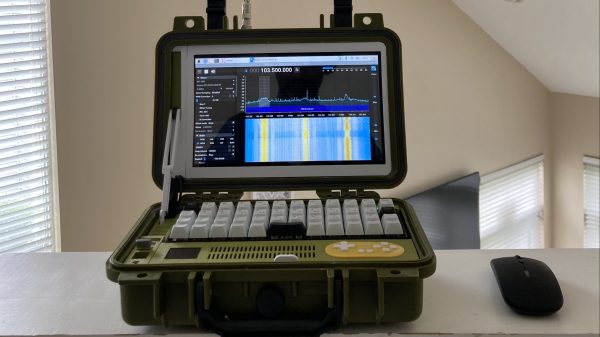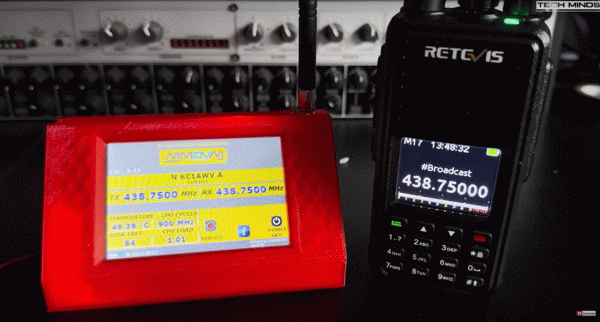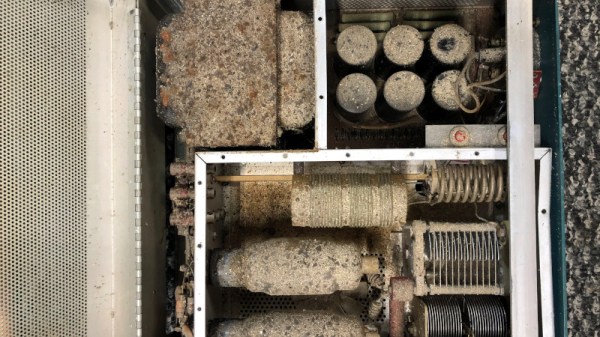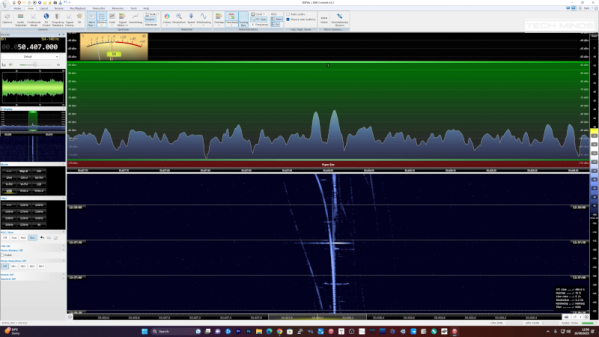We’ve devoted a fair amount of virtual ink here to casting shade at self-driving vehicles, especially lately with all the robo-taxi fiascos that seem to keep cropping up in cities serving as testbeds. It’s hard not to, especially when an entire fleet of taxis seems to spontaneously congregate at a single point, or all it takes to create gridlock is a couple of traffic cones. We know that these are essentially beta tests whose whole point is to find and fix points of failure before widespread deployment, and that any failure is likely to be very public and very costly. But there’s someone else in the self-driving vehicle business with way, WAY more to lose if something goes wrong but still seems to be nailing it every day. Of course, we’re talking about NASA and the Perseverance rover, which just completed a record drive across Jezero crater on autopilot. The 759-meter jaunt was completely planned by the onboard AutoNav system, which used the rover’s cameras and sensors to pick its way through a boulder-strewn field. Of course, the trip took six sols to complete, which probably would result in negative reviews for a robo-taxi on Earth, and then there’s the whole thing about NASA having a much bigger pot of money to draw from than any start-up could ever dream of. Still, it’d be nice to see some of the tech on Perseverance filtering down to Earth.
ham radio214 Articles
Ham Radio Mini Beam
Years ago, ham radio operators more often than not had land, and usually there weren’t any restrictions on what kind of antenna they could erect on that land. These days you are more likely to live with less or no land, and even if you do own property, you might have restrictions that prevent you from putting up any kind of visible antenna.
But even if that’s not the case, you might not have room for an old-fashioned “tri-bander” or “cubical quad” that the hams of old preferred. [Waters & Stanton] has a 65-year-old design for a miniature beam that he explains, and it produces a good beam antenna in a reduced amount of space. You can watch a video about the antenna below.
The design uses a doublet — a dipole fed with a balanced line and tuned at the feed point. A 22-foot doublet can cover 20 meters down to 10 meters without traps. Adding a director and reflector element provides directionality and gain. A unique arrangement allowed a 12-foot boom to support multiple elements on some bands by introducing a central coil on some elements. For example, the director is tuned to 15 meters using a center coil. But the coil is shorted with a 10 meter quarter stub that acts as a short on that band. You can see a complete explanation in the video.
We were hoping to see a build and some on-the-air testing, but, apparently, that is left as an exercise for the viewer. We imagine that 65 years ago, you’d use a grid dip oscillator to tune the stubs. Today, an antenna analyzer would do the job easily.
2023 Cyberdeck Challenge: A Ham Radio Cyberdeck
Cyberdecks rock because their homebrewed nature lets them feature all kinds of nifty additional functionality. [Kaushlesh] has built his deck with an eye to ham radio use, and it’s a rugged and impressive thing.
The deck is built into a weatherproof enclosure, with various 3D-printed parts helping to integrate the components into the clamshell enclosure. It runs on a Raspberry Pi 4, with [Kaushlesh] springing for the hefty model with 8GB of RAM. It has a 10-inch LCD screen and a rechargable battery pack with an impressive 20 hour battery life, and is intended for use when [Kaushlesh] is out camping or participating in ham radio field days. To that end, it’s equipped with a USB software-defined radio module and a BNC connector for hooking up an external antenna. It also has a game controller that mounts inside, just in case he desires playing a few games on Retropie while he’s out and about. It’s even got storage for a mouse and rocks a decent-sized keyboard inside.
We’d love to tote this to a hamfest for a bit of hacking on the side. It’s not the first ham-themed cyberdeck we’ve seen, either. Now we just need one built for prosciutto. Video after the break.
Continue reading “2023 Cyberdeck Challenge: A Ham Radio Cyberdeck”
Break Free From Proprietary Digital Radio
Digital modes are all the rage these days in amateur radio — hams are using protocols like WSPR to check propagation patterns, FT8 to get quick contacts on many bands with relatively low power, and MSK144 to quickly bounce a signal off of a meteor. There’s also digital voice, which has a number of perks over analog including improved audio quality. However, the major downside of most digital voice modes, at least those in use on UHF and VHF, is that they are proprietary with various radio brands having competing digital standards. To get above the noise a more open standard can be used instead.
The M17 standard, originally created by [Wojciech Kaczmarski] aka [SP5WWP], uses Codec 2 to convert voice into a digital format before it is broadcast over the air. Codec 2 is an open standard unlike other audio codecs. M17 also supports reflectors, which can link individual radios or entire repeaters together over the Internet. While you can make purpose-built modules that will interface with most standard radio inputs, it’s also possible to modify existing hardware to support this standard as well. The video below from [Tech Minds] shows this being done to a radio with only a few hardware modifications and the installation of a new firmware.
For anyone who has been frustrated that there’s no real universal standard for digital voice in VHF and above, M17 could be a game-changer if enough people get tired of their friends being on other proprietary digital systems. There’s plenty of supported hardware out there that most hams probably already have already, including a number of TNC devices like the Mobilinkd and the DigiRig, so it shouldn’t be too hard to get started. If you’re more into networking over radio, though, take a look at this method for sending high-bandwidth IP networking over the UHF band. Continue reading “Break Free From Proprietary Digital Radio”
Cheap Ham Radio Improves The Low End UI If Not The RF
There was a time when buying a new radio was something many hams could never afford to do. Then came the super cheap — and super controversial — VHF and UHF radios from China. But as they say, you get what you pay for. The often oddly named handhelds like Baofeng and Wouxun are sometimes odd to work with and may have questionable RF outputs. A new radio has a less tongue-twisting English name and many improved features for about $50 — the Talkpod A36Plus and [Josh] shows us how they work in a video that you can see below.
The new features are generally good. For example, the radio can pick up AM in the aircraft band, something most of these cheap radios won’t do. It works on VHF and UHF bands but also picks up FM broadcasts. The USB-C connector is welcome, and the screen is large and colorful. It has 500 channels and IP5 water resistance.
There were a few issues, though. If you want to use it as a scanner, it’s not very fast. The radio comes with a programming cable, but apparently, it uses an odd USB chipset that may give you some driver issues. The biggest problem, though, is that it has, according to the video, excessive spurious emissions. The power isn’t that high, and the antenna probably filters off some of it, too. But creating interference across the band isn’t very polite.
How bad are the harmonics? Well, [Josh] hooks up a spectrum analyzer and also shows how a radio tuned to the second harmonic easily picks up the transmission. Of course, no radio is perfect, but it seems like it does have very strong harmonic emissions. Of course, it may or may not be any worse than similar cheap radios. They are probably all above the legal limits, and it is just a matter of degrees.
These little radios won’t directly work the world — you need an HF radio for that, generally. They will let you connect to local repeaters, though. Some of those cheap radios can lead to interesting projects, too.
Continue reading “Cheap Ham Radio Improves The Low End UI If Not The RF”
A Dusty Boat Anchor Back From The Brink
Many of us will have found dusty forgotten pieces of electronics and nursed them back to health, but we were captivated by [Don]’s tale of electronic revival. Instead of perhaps a forgotten computer or television, his barn find was a Heathkit linear amplifier for radio amateurs. In that huge box underneath an impressive layer of grime were a pair of huge tubes, along with all the power supply components to give them the 2 kV they need. It should have been good for a kilowatt when new, can it be made to go on air again?
Perhaps understandably with such an old device, after cleaning away the dust of ages he replaced the power supply circuitry with new parts and PCBs. A linear amplifier is surprisingly simple, but because of the voltages and power concerned there’s a need to treat its power circuits with respect. On first power-up the filaments work and the rails come up, so when given some RF drive it comes alive. Coupled with a case restoration you’d never know how dreadful a state it had been in.
We like to see classic Heathkit devices here at Hackaday, though we’ve followed their more recent reappearance too.
Detecting Meteors With SDR
The simplest way to look for meteors is to go outside at night and look up — but it’s not terribly effective. Fortunately, there’s a better way: radio. With a software-defined radio and a little know-how from [Tech Minds], you can easily find them, as you can see in the video below.
This uses the UK meteor beacon we’ve looked at before. The beacon pushes an RF signal out so you can read the reflections from meteors. If you are too far from the beacon, you may need a special antenna or you might have to find another beacon altogether. We know of the Graves radar in France and we have to wonder if you couldn’t use some commercial transmitter with a little experimentation.
[Tech Minds] has some practical tips to share if you want to try doing it yourself. If you want to see what a detected meteor looks like, you can visit the UK beacon’s gallery page.
We saw another presentation on the UK beacon earlier this year. Using commercial transmitters sounds like it might be easy, but apparently, it isn’t.


















